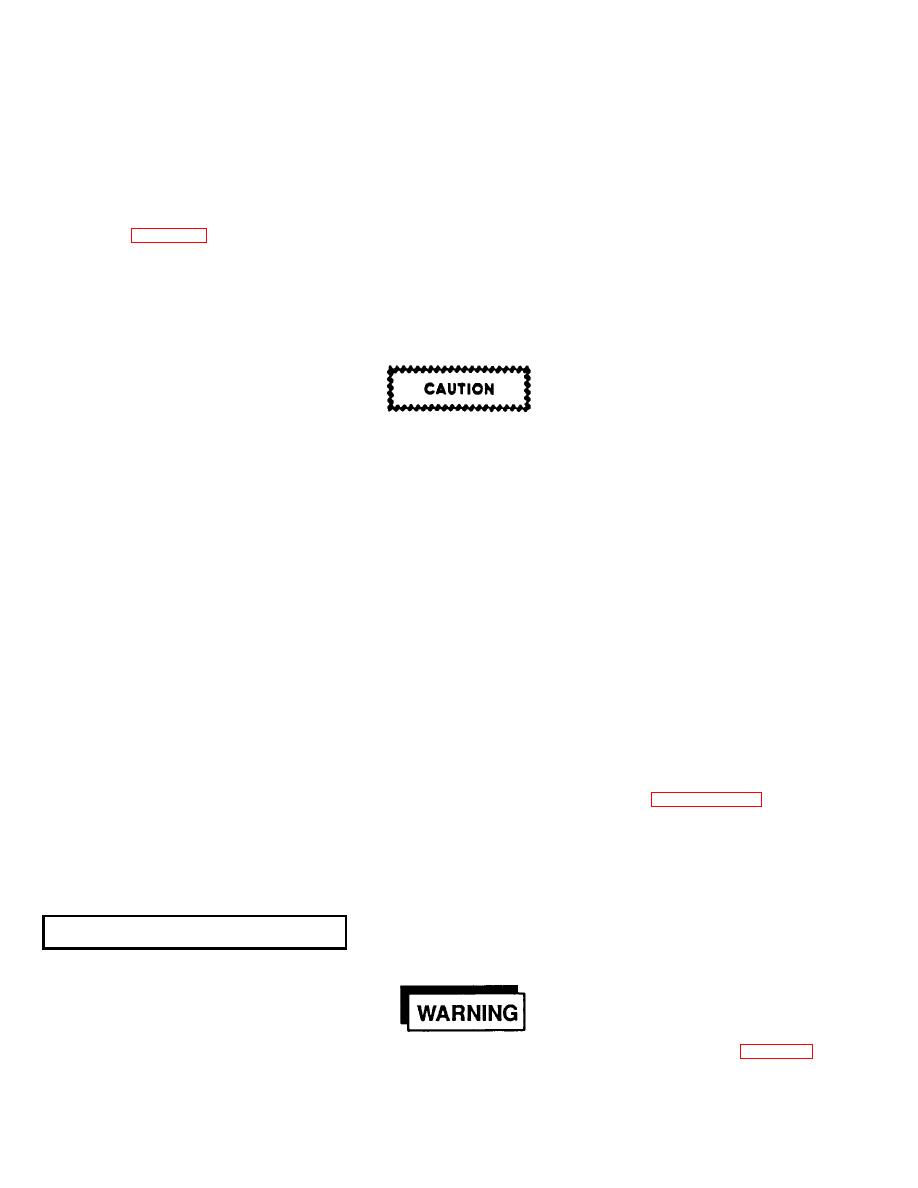 |
|||
|
|
|||
|
Page Title:
DISCHARGING REFRIGERANT |
|
||
| ||||||||||
|
|
 TM5-4110-234-14
TO 40R7-5-7-1
(1) To test a unit known to have some charge it is only necessary to check all points at which a leak could
exist using one of the two recommended methods.
(2) If a unit has been totally discharged or pumped down and opened for repairs it will have to be
pressurized before it can be leak tested.
(a) Backseat (remove the valve stem cap and turn the stem fully counterclockwise) on both compressor service
valves. See figure 5-1.
(b)
Remove the flare caps from the compressor suction and discharge service valve gage port tees.
(c)
Connect hoses from a testing manifold to the suction and discharge valve gage port tees.
(d)
Connect the center hose on the testing manifold to a drum of Refrigerant-12.
If the refrigerant drum has a selector valve that allows either vapor or liquid refrigerant to be dispensed,
be sure it is in the vapor position. When dispensing refrigerant vapor always do so at a slow enough rate
so that frost does not form on the drum or on components of the servicing fixture.
(e)
If the unit has been pumped down open all valves except the two receiver valves.
(f)
If the unit has been totally discharged open all valves including the receiver.
(g) Open the refrigerant drum valves. Open the testing manifold valve slightly and adjust as necessary to
prevent formation of frost; and, allow system pressure to build up until the manifold gage reads 40-50 psi (2.8-3.5
kg/cm2).
(h)
Close the refrigerant drum valve and the testing manifold valves.
(i)
Remove the refrigerant drum hose from the testing manifold.
(j)
Connect a hose from a cylinder of dry nitrogen to the testing manifold.
(k) Open the nitrogen cylinder valve and the testing manifold valves; allow system pressure to build up until both
manifold gages read 350 psi (24.7 kg/cm2).
(I) Perform leak tests, then discharge and purge the system in accordance with paragraphs 5-8 and 5-9 before
performing maintenance, or before evacuating and charging the system, as appropriate. Leave the service manifold
attached.
(m) If no repairs are necessary to the evaporator section install the evaporator air housing and grill (See fig. 4-
12).
5-8.
DISCHARGING REFRIGERANT
a.
Be sure that power has been disconnected.
Work in a well ventilated area. Read and understand the complete Warning at the beginning of paragraph
5-5.
5-6
|
|
Privacy Statement - Press Release - Copyright Information. - Contact Us |